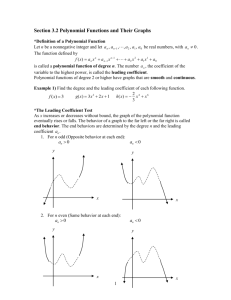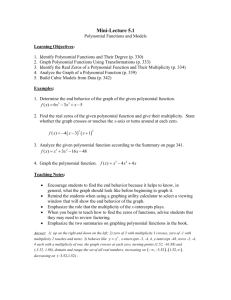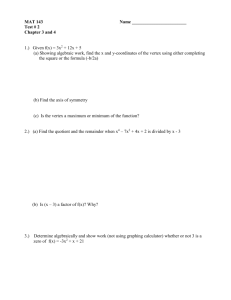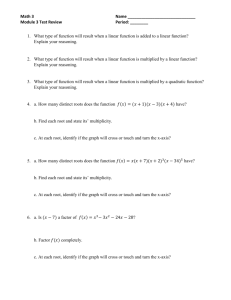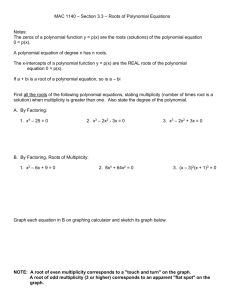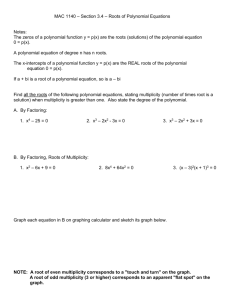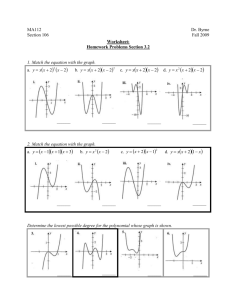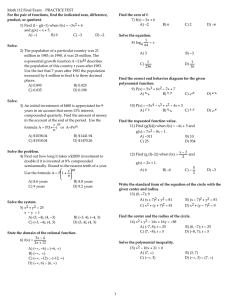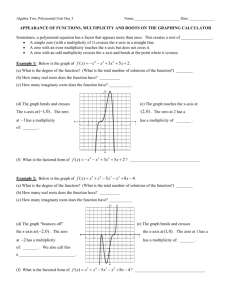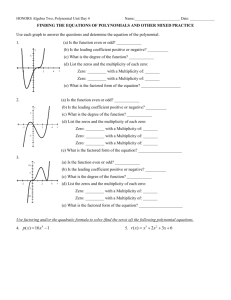multiplicity
advertisement
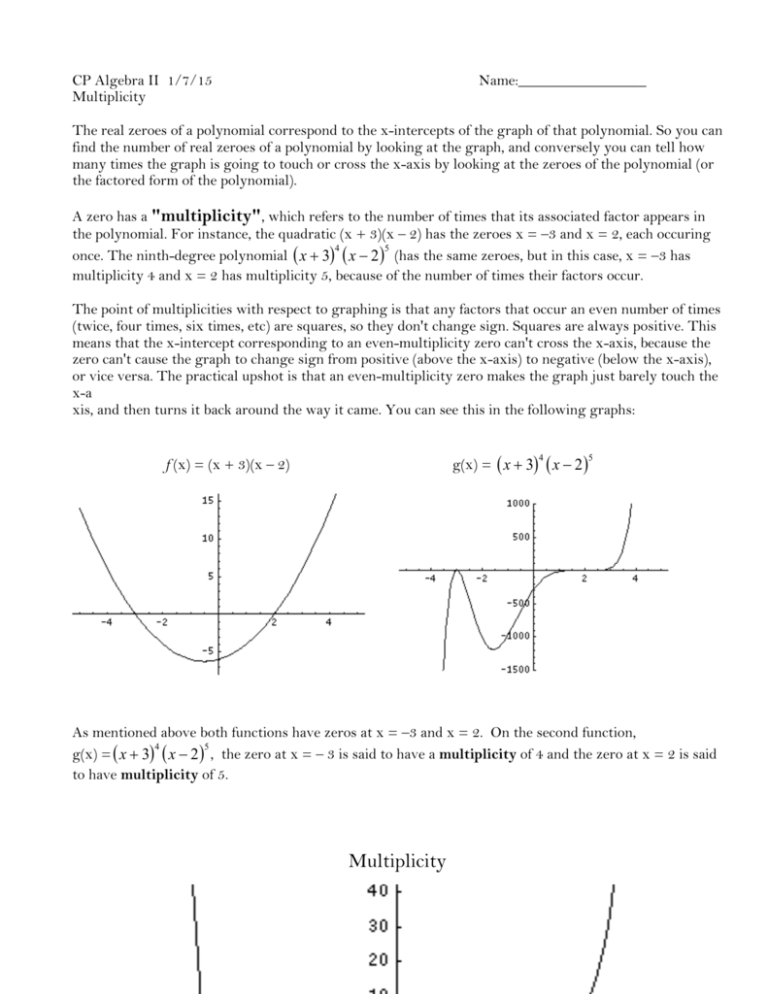
CP Algebra II 1/7/15 Multiplicity Name:_________________ The real zeroes of a polynomial correspond to the x-intercepts of the graph of that polynomial. So you can find the number of real zeroes of a polynomial by looking at the graph, and conversely you can tell how many times the graph is going to touch or cross the x-axis by looking at the zeroes of the polynomial (or the factored form of the polynomial). A zero has a "multiplicity", which refers to the number of times that its associated factor appears in the polynomial. For instance, the quadratic (x + 3)(x – 2) has the zeroes x = –3 and x = 2, each occuring 4 5 once. The ninth-degree polynomial ( x + 3) ( x - 2 ) (has the same zeroes, but in this case, x = –3 has multiplicity 4 and x = 2 has multiplicity 5, because of the number of times their factors occur. The point of multiplicities with respect to graphing is that any factors that occur an even number of times (twice, four times, six times, etc) are squares, so they don't change sign. Squares are always positive. This means that the x-intercept corresponding to an even-multiplicity zero can't cross the x-axis, because the zero can't cause the graph to change sign from positive (above the x-axis) to negative (below the x-axis), or vice versa. The practical upshot is that an even-multiplicity zero makes the graph just barely touch the x-a xis, and then turns it back around the way it came. You can see this in the following graphs: g(x) = ( x + 3) ( x - 2 ) 4 ƒ(x) = (x + 3)(x – 2) 5 As mentioned above both functions have zeros at x = –3 and x = 2. On the second function, 4 5 g(x) = ( x + 3) ( x - 2 ) , the zero at x = – 3 is said to have a multiplicity of 4 and the zero at x = 2 is said to have multiplicity of 5. Multiplicity Passes straight through: multiplicity of one Shape of a parabola: multiplicity of even degree (usually assume lowest even degree – 2nd degree General shape is cubic: multiplicity is odd greater than or equal to 3 (usually assume lowest odd degree – 3rd degree Zeros : x = –4 w/ multiplicity of 1, x = –1 with multiplicity of 2, x = 3 with multiplicity of 3 Factors are (x + 4), (x +1), and (x – 3) A general equation for the polynomial is y = k(x + 4)(x +1)2 (x - 3)3. If you are given a point on the function, you can substitute for x and y and solve for k.


